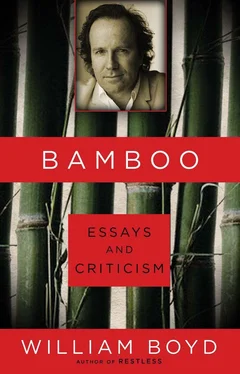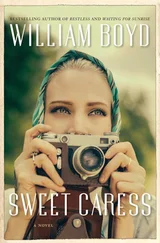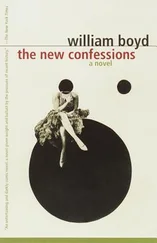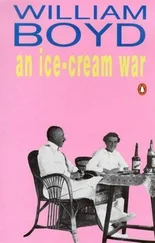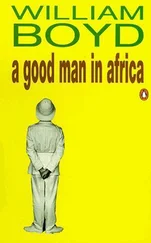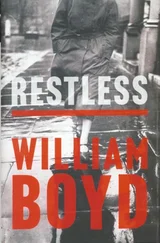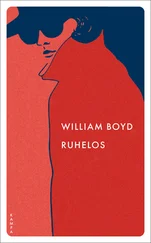Between my finger and thumb
The squat pen rests.
I’ll dig with it .
There is something irreducibly Heaneyesque — its heft, its palpable physicality — about Hughes’s “digging” that his editorial pruning won’t ever disguise. In a fine and recent essay (a reprint of a lecture delivered at the New York Public Library, published in The New York Review of Books) about Robert Mapplethorpe (that, incidentally, fixes Map-plethorpe’s reputation once and for all as a modestly talented photographer), Hughes reveals that he is a part-time carpenter. And there is in Hughes’s writing a true craftsman’s love of technique and precision. “I can make a drawer that slides … I love the tools, the smell of shavings, the rhythm of work,” Hughes says with justifiable pride, and I’ll bet he knows the difference between a haunched tenon and a double-lapped dovetail joint as well. Everything has its own name, and for a writer there is a magical pleasure to be gained in using it correctly. From a reader’s point of view one of the delights of Hughes’s criticism is in encountering just this facility. At random from The Shock of the New: the boat in the background of a Matisse seascape is “lateen rigged”; Bonnard is described sitting “quiet as an old tabby”; colours are “rose, madder, lilac, chrome yellow, viridian”; about Sullivan’s Guaranty Building in Buffalo we learn that “Sullivan underplayed his horizontals by recessing the face of the spandrels from the face of the piers.” We may not know exactly what it means, but it sounds wonderful and possesses the unmistakable frisson of authority.
Naturally, Homer nods from time to time, and Hughes, like any critic who is obliged to write about stuff he would never choose to see as a member of the public or art lover, occasionally falls back on tried and tested routines. Thus Sean Scully’s abstracts
fairly breathe deliberation and earnestness. Their light and colour relate to the Old Masters, in particular to Velázquez’s silvery greys and ochres over a dark ground. Their gravitas is real.
Sorry, no sale. But these moments are exceptionally rare, which is why they draw one up short, and, by and large, Hughes copes extremely well when writing about abstract painting. What more is there to say, really, in front of a Rothko or a Jackson Pollock other than record colour tones and the textures of the paint surface? It has always seemed to me one of the more telling and covert arguments against abstract painting that abstraction so reduces analytical discourse. The critic, the viewer, is left nearly wordless, like an amateur oenophile trying to describe the taste of a St Emilion. “Nice, blackcurranty, metallic … er …” Stand in front of a colour-field painting — however big and imposing, with however much gravitas — or a slashed Lucio Fontana, or an Yves Klein monochrome square, and try and analyse your feelings and thoughts in more than three sentences. Great art, good art, in any medium should stimulate complex responses. An impoverished vocabulary indicates, if not a corresponding shallowness, then a simplicity that somewhat vitiates its claims to be taken so seriously.
Two other virtues in Hughes’s critical persona need to be highlighted. First he is a phrase-maker of fine pithiness and wit. An aphoristic twang characterizes many of his judgements that, unusually, seems entirely natural and unforced. Hockney is summarized as the Cole Porter of figurative painting, not its Mozart; “Fischl country is suburban Long Island. It smells of unwashed dog, barbecue lighter fluid, sperm”; now that communism has been defeated, the rise of the American Right’s homophobia is explained thus: “having lost the barbarian at the gates, they went for the fairy at the bottom of the garden”; “for all its drawbacks, onanism was the one kind of sex that could not be controlled by the State or the Parent,” Hughes remarks on the masturbatory fantasy that underpins Duchamp’s The Bride Stripped Bare by her Bachelors; Caravaggio “thrashed about in the etiquette of early seicento cultivation like a shark in a net.” The wit, the temerity, the sense of humour that inform Hughes’s criticism are a marvellously rich seam in his prose, and it can be malignantly efficient when it comes to attacking pretension or vainglory. But Hughes’s strictures are never delivered lightly, merely to break a butterfly on a wheel, and here we can acknowledge the second facet of his criticism that makes it so valuable. Hughes is a historian, and one of the highest scholarship as well, judging from the exegetical thoroughness of The Fatal Shore . All his writings are buttressed by a marked consciousness of the traditions out of which art springs, and his criticism is liberally seasoned with historical asides and cultural references from all disciplines. Like Ruskin, too — and it is a just comparison — Hughes is signally aware of the socio-political dimensions of art and the art world. Indeed it could be claimed that his art criticism during the eighties gives a clearer sense of the blight of the Reagan years and of the various educational and cultural disasters afflicting the USA in particular and the West in general than many an op-ed columnist or professorial pundit. The Mapplethorpe essay is exemplary in this regard. Stimulated by the storm that arose over a publicly funded exhibition of Mapplethorpe’s erotic photographs, Hughes not only shows Mapplethorpe the exit door from the pantheon but also analyses the cultural malaise that produces both phenomena: a misplaced radical-chic veneration and a complementary right-wing fundamentalist witch-hunting. In addition, he outlines a defence of quality in art — as opposed to a catch-all relativism — that is as eloquent in its simplicity as in its passion. Expanding on his own fair skills as a carpenter Hughes remarks that
… when I see the level of woodworking in a Japanese structure like the great temple of Horyu-ji, the precision of the complex joints, the understanding of hinoki cypress as a live substance, I know that I couldn’t do anything like that if I had my own life to live over. People who can make such things are an élite; they have earned the right to be. Does this fill me … with resentment? Absolutely not. Reverence and pleasure, more like. Mutatis mutandis , it’s the same in writing and the visual arts. Not all cats are the same in the light … [but] these differences of intensity, meaning, grace can’t be set forth in a catechism or a recipe book. They can only be experienced and argued and then seen in relation to a history that includes a social history.
As a justification of a critical modus operandi this seems to me to be hard to better. And, moreover, it is one that Robert Hughes has been practising for almost thirty years: as artists and critics, aficionados and enthusiasts, writers and readers, we are all the richer for it.
1992
American Art(Review of American Visions: The Epic History of Art in America by Robert Hughes)
During the composition of this mightily impressive, beautifully written, astute and capacious book, Robert Hughes found himself describing it to others as “a love letter to America”—a description which he now qualifies with the reminder that “different stages of an affair produce different letters and some are not free of reproach to their brazen, abundant, horizon-filling subject.”
Pursuing the analogy, we might observe that the relationship starts off with some cautious flirtation, is duly consummated, enjoys a passionate middle phase and then, as doubts and suspicions crowd in, turns acridly sour. By the book’s end Hughes’s love has turned, if not to hate, to something close to contempt.
Читать дальше
